Table of Contents
Are you ready to embark on a flavourful adventure that will transport you and your taste buds to new heights? Do you want to uncover the world of ancient grains gaining popularity again? So, get ready.
Welcome to the interesting and fascinating world of millets, a diverse group of grains high in nutritional profile and great culinary versatility.
In ancient times, these millets used to be the staple food across the world. So, no matter whether you are a fitness freak, a health enthusiast, or a culinary expert, millets are for everyone.
Different cultures have cherished millets worldwide, and in India, it holds a very special place. The millets are not only tasty but can easily be a part of your diet in various ways. They are also full of many health benefits.
They are a unique, flavourful, nutritious, and superfood that can keep your tummy always happy tummy.
So, let’s get started to unlock the different millets available in the market for consumption. Be prepared to be amazed and inspired to add these wonderful tiny little grains to your diet.
Exploring the Different Types of Millets
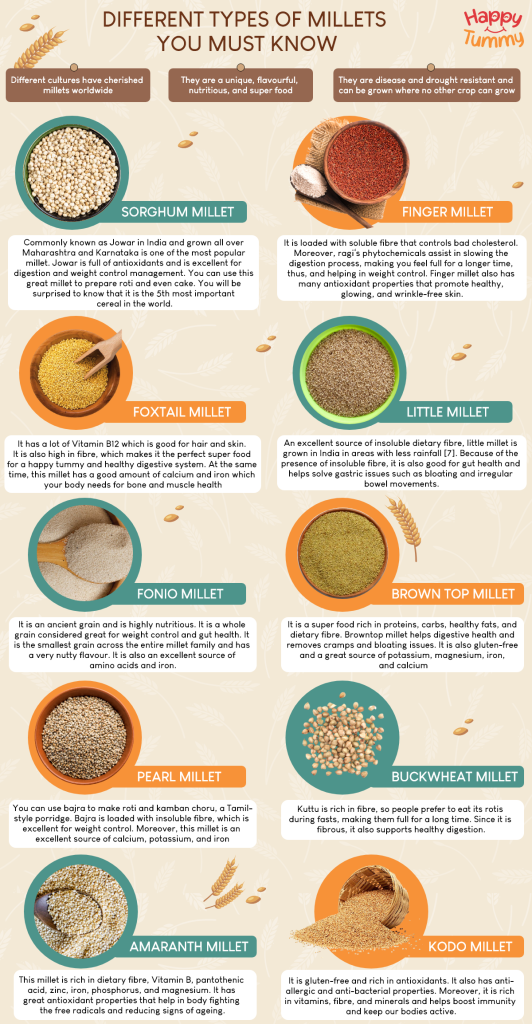
Do you know millets are disease and drought resistant and can be grown where no other crop can grow? That’s the beauty of these ancient grains.
There are ten different varieties that you can find and use in your kitchen. And if you can’t get them all, try Aashirvaad Multi Millet Mix Atta, made of all the vital millets and a great source of dietary fibre for your family.
1. Sorghum Millet
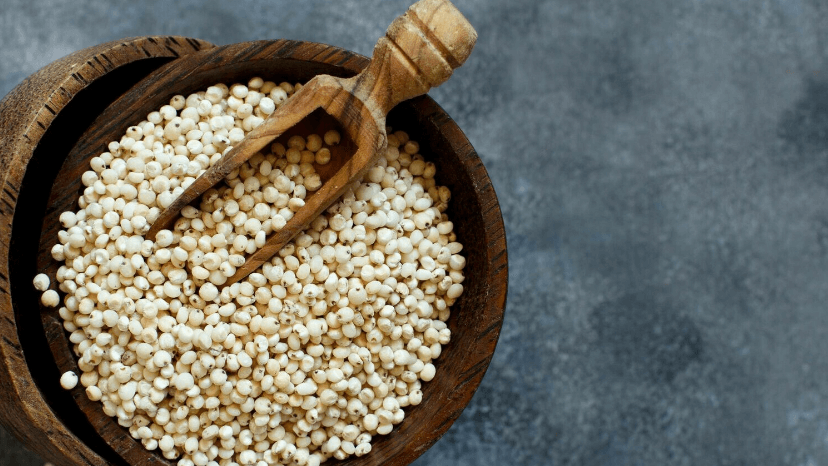
Commonly known as Jowar in India and grown all over Maharashtra and Karnataka is one of the most popular millet. Jowar is full of antioxidants and is excellent for digestion and weight control management [1].
You can use this great millet to prepare roti and even cake. You will be surprised to know that it is the 5th most important cereal in the world.
It is a very good source of fibre and is naturally gluten-free. Hence, it is safe for people with gluten allergies to consume. If you want to know how much fibre is present in a jowar roti, do take the My Meal Plan test prepared by Aashirvaad Atta with Multigrain and expert nutritionist. You can check the fibre content of almost every food product. Do try it now.
2. Pearl Millet

Pearl Millet, or Bajra, is yet another popular millet and has been cultivated in India for a long time.
You can use bajra to make roti and kamban choru, a Tamil-style porridge. Bajra is loaded with insoluble fibre, which is excellent for weight control. Moreover, this millet is an excellent source of calcium, potassium, and iron [2].
In the older days, bajra used to be the main source of food ingredients and dietary energy in the rural part of our country.
3. Foxtail Millet
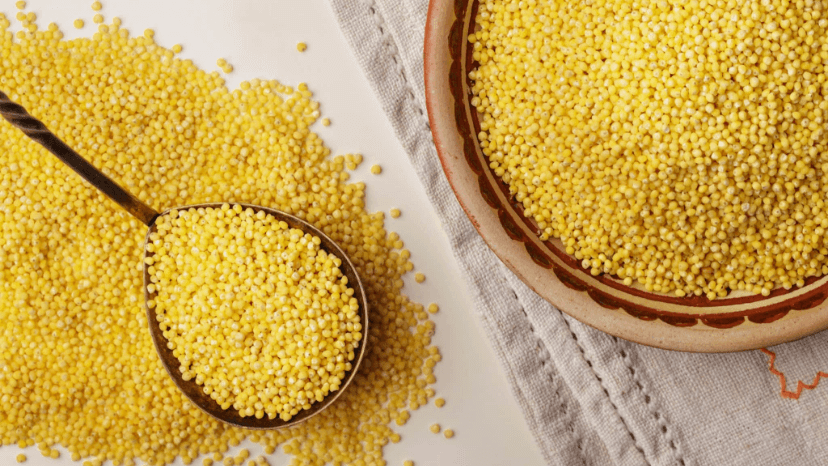
Foxtail Millet, or Italian Millet, is Asia’s second-most commonly planted millet. It has a lot of Vitamin B12 which is good for hair and skin [3]. It is also high in fibre, which makes it the perfect superfood for a happy tummy and healthy digestive system.
At the same time, this millet has a good amount of calcium and iron which your body needs for bone and muscle health.
Foxtail Millet has everything from Vitamin A and E to potassium and phosphorous that your body needs for daily activities. You can make foxtail millet’s kheer and roti and even use it for making lemon rice.
4. Finger Millet
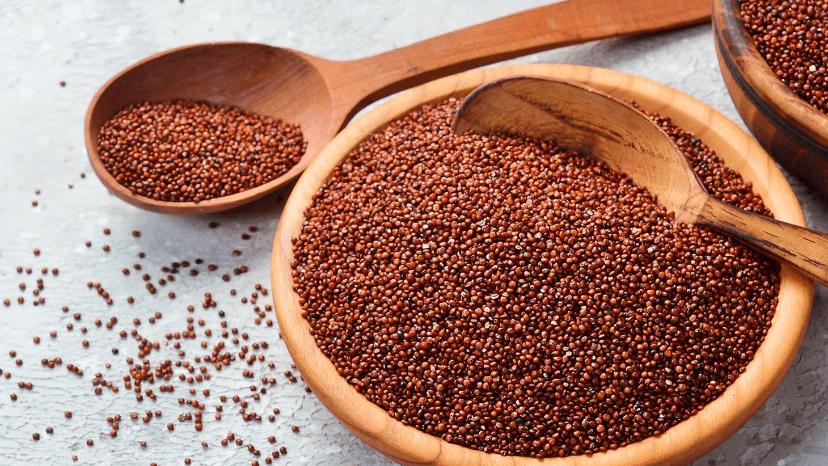
Ragi is a popular millet, especially when we talk about introducing them to babies and toddlers. It is loaded with soluble fibre that controls bad cholesterol [4].
Moreover, ragi’s phytochemicals assist in slowing the digestion process, making you feel full for a longer time, thus, and helping in weight control.
Finger millet also has many antioxidant properties that promote healthy, glowing, and wrinkle-free skin.
It is often introduced to kids to strengthen their bones once they are six months old, as it has a significant amount of calcium. You can use ragi to make bread, cakes, porridge, puddings, dosa, roti, and cookies.
5. Fonio Millet

You may not have heard of this often; it is known as acha or findi [5]. It is an ancient grain and is highly nutritious. This whole grain is considered great for weight control and gut health.
It is the smallest grain across the entire millet family and has a very nutty flavour. It is also an excellent source of amino acids and iron. You can use this millet as flour and make bread and cake from it.
You can even cook and serve it as couscous, and it is very delicious to eat.
6. Brown top Millet
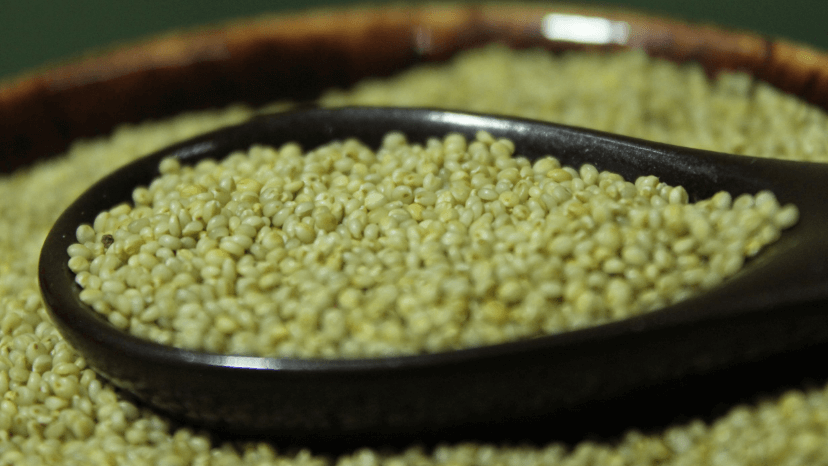
In India, you may have heard of browntop millet with the name of choti kangni [6]. This millet is traditionally grown in India and has been used to make desserts.
It is a superfood rich in proteins, carbs, healthy fats, and dietary fibre. Browntop millet helps digestive health and removes cramps and bloating issues.
It is also gluten-free and a great source of potassium, magnesium, iron, and calcium. It is commonly used to produce various food items such as snacks, cereals, and baked goods.
7. Little Millets

An excellent source of insoluble dietary fibre, little millet is grown in India in areas with less rainfall [7]. Because of the presence of insoluble fibre, it is also good for gut health and helps solve gastric issues such as bloating and irregular bowel movements.
The name may have little attached to it, but its benefits are enormous.
This specific millet is rich in potent antioxidants, iron, and great immunity boosters. It is mostly prepared as couscous and upma filled with vegetables. You can eat little millet for breakfast, lunch or even dinner.
8. Buckwheat Millet
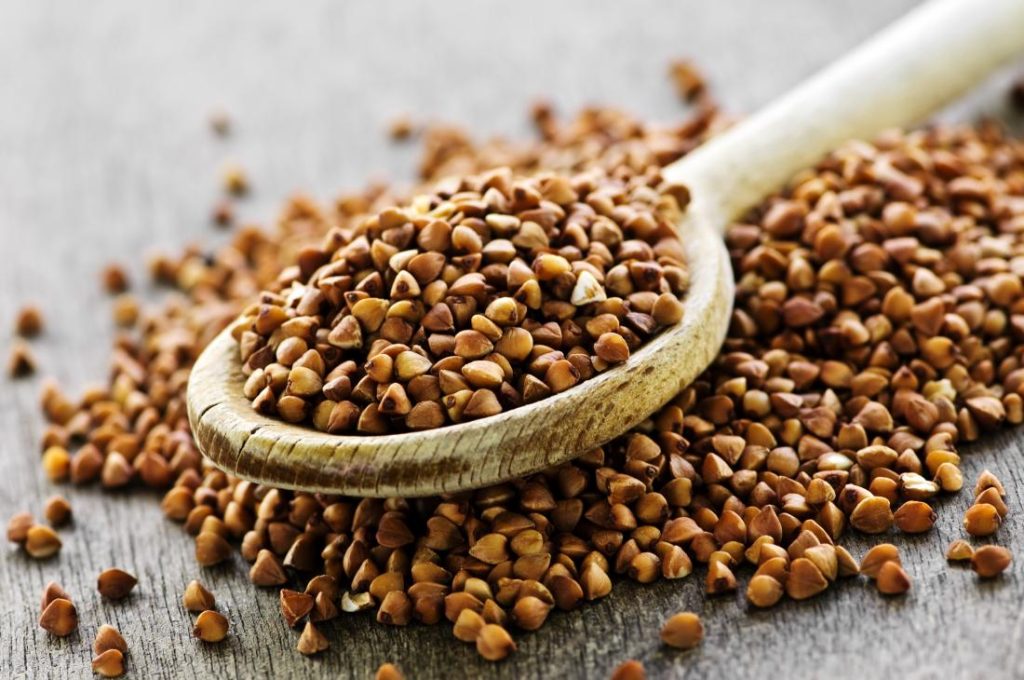
Come Navratri, and people start to consume Kuttu’s atta. But do you know kuttu is known as buckwheat millet? Yes, there are times when we eat millet in some form without knowing they are millet.
And it is not just famous in India; it is very popular in Italy and is used to make pizzocheri, a whole wheat pasta.
Kuttu is rich in fibre, so people prefer to eat its rotis during fasts, making them full for a long time. Since it is fibrous, it also supports healthy digestion.
If you want to know how great your digestive health is, take this digestive quotient test designed by an expert nutritionist and Aashirvaad Atta with Multigrain.
9. Amaranth Millets

Like kuttu, amaranth millet is also used widely during Navratri and Shravan fasts in India. This millet is rich in dietary fibre, Vitamin B, pantothenic acid, zinc, iron, phosphorus, and magnesium [8].
It has great antioxidant properties that help the body fight free radicals and reduce signs of ageing. This millet variety is good for building immunity as it is rich in vitamin C. Your body needs this vitamin for the production of white blood cells.
It is very simple to cook this millet. You can even boil it like rice. It can also be used as flour for baking purposes or making porridge. In short, it is a superfood and can be used in many ways.
10. Kodo Millets

What originated in West Africa is now grown widely in India and used as a substitute for rice [9]. Kodo millet is an extremely healthy and nutritious millet. It is gluten-free and rich in antioxidants.
Kodo also has anti-allergic and anti-bacterial properties. It may be a very small grain, but it is excellent for your health.
Moreover, it is rich in vitamins, fibre, and minerals and helps boost immunity and keep our bodies active.
You can use kodo millet for making kheer, payasam, idli, dosa, khichdi, Pongal, biscuits, and even noodles. It is a bowl full of power-packed nutrients that can be eaten at any time of the day.
Final Thoughts
We are sure you are as surprised as we are to know about these amazing millets that can easily be incorporated into your diet. They are power-packed and not just one; all these ten millets have something or other to contribute towards your overall wellness.
So, take advantage of the opportunity to make delicious millet recipes from anyone or all the millets mentioned above.
Also read –
Millet vs Rice: Which is better?
Brown Top Millet: The Superfood benefits
Going Gluten-Free? Here’s Why Millet Should Be Your Top Choice
FAQs
There is no one specific millet that is good for health. Every millet has some or other properties that are beneficial for overall health and wellness.
It is always recommended to check with your doctors before introducing anything new to your diet, especially if you have any health issues. But people with thyroid should avoid the consumption of millet.
















